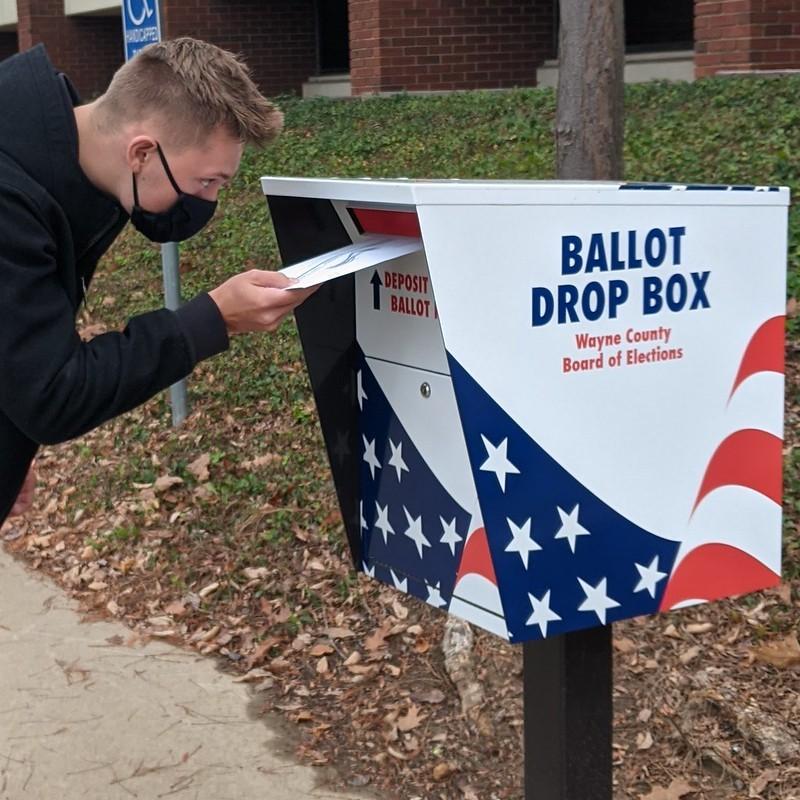Majority-Republican counties experienced 73 more COVID-19 deaths per 100,000 people than their Democratic counterparts, suggests an observational study today in Health Affairs.
A team led by University of Maryland researchers analyzed COVID-19 death and vaccination data and 2020 presidential election returns from 3,109 US counties from Jan 1, 2020, to Oct 31, 2021. The researchers hypothesized that partisan differences in attitudes toward the pandemic and compliance with local mask, physical distancing, and vaccine policies would lead to differences in death rates.
"Political ideology has long been known to affect health-related behaviors, attitudes, and risk perception," the researchers wrote. "At the root of conservative ideologies is the notion that health is an individual responsibility that government should have little to no power in regulating or intervening. Conversely, liberal ideologies have often promoted the role of government to enforce stricter public health regulations to protect the health of citizens over the right of individuals to make their own choices."
Counties were considered Republican if at least 70% of residents voted Republican in the 2020 presidential election, and they were considered Republican-leaning if 50% to 70% voted that way. Democratic counties were those in which 0 to 29% voted Republican, and Democratic-leaning counties were those in which 30% to 49% voted that way.
Vaccine uptake not major factor
After controlling for demographic characteristics and social determinants likely to affect COVID-19 transmission and outcomes, the team found a positive relationship between county Republican vote share and COVID-19 death rates.
Relative to Democratic counties, the risk difference for Democratic-leaning counties was 5.78, but it was not statistically significant. Compared with Democratic counties, though, the risk differences for Republican-leaning and Republican counties were significant, at 33.52 and 72.94, respectively. And a dose-response by Republican vote share was apparent, with the most Republican counties having the highest death rates.
During the first two COVID-19 surges (April to September 2020), Republican counties, on average, had lower (but not significantly different) death rates than their Democratic counterparts, but the difference leveled off by the end of 2020. Amid the second surge (September 2020 to March 2021), COVID-19 death rates in Republican counties outpaced those of Democratic counties.
Amid the spring 2021 wave, Republican counties had a significantly higher COVID-19 death rate than Democratic counties, a gap that widened through the end of the Delta variant era (June to October 2021). A dose-response relationship was evident once again, with counties with the highest Republican vote share seeing the greatest risk difference in COVID-19 death rates.
A sensitivity analysis revealed that higher county COVID-19 vaccination rates were associated with lower death rates, while vaccination rates were negatively associated with Republican vote share. But differences in vaccination rates accounted for only 9.98% of the death rate differential.
Political differences were most strongly tied to COVID-19 death rates among White, Asian, and American Indian and Alaska Native residents. Most Democratic and Democratic-leaning counties were in urban areas and had larger proportions of Black and Hispanic residents, while most Republican and Republican-leaning counties were in rural settings.
Non-majority voters also affected
"It appears that voting behavior acts as a proxy for compliance with and support for public health measures, vaccine uptake, and the likelihood of engaging in riskier behaviors (for example, unmasked social events and in-person dining) that could affect disease spread and mortality," the researchers wrote.
The team noted that deaths in Republican counties weren't limited to unvaccinated residents or those noncompliant with public health mitigation measures because of their political proclivities.
"Not everyone who lives in a Republican county votes Republican," lead author Neil Sehgal, PhD, MPH, said in a University of Maryland news release. "Even in the reddest [most Republican] counties, you have people who aren't able to vote or aren't able to leave, and yet are subject to the policies and behaviors that surround them. If they are older, immunocompromised, or an essential worker, that puts them at greater risk of death or disability."
The federal government, the researchers said, should continue to promote health information and invest in the community health workforce and other public health supports to boost vaccine uptake in underserved and vaccine-hesitant areas, regardless of political bent.
"In addition, clearer science-based guidance to support updating ventilation, requiring high-filtering face masks, and other protective measures may help minimize COVID-19 mortality even when local polarization limits vaccine uptake," they wrote.




















